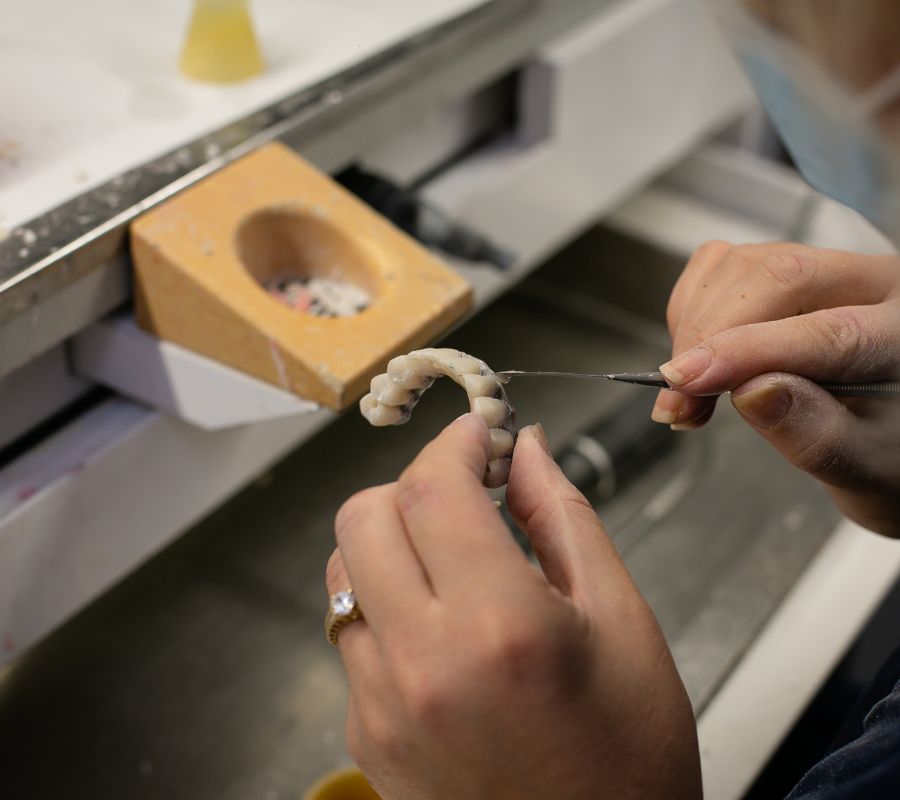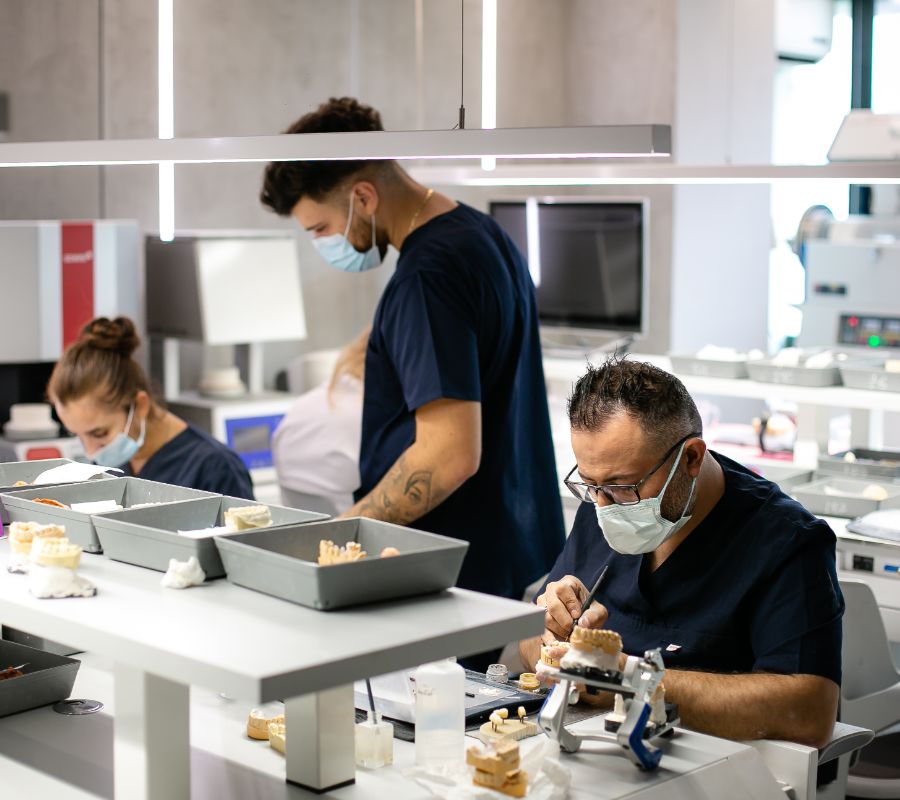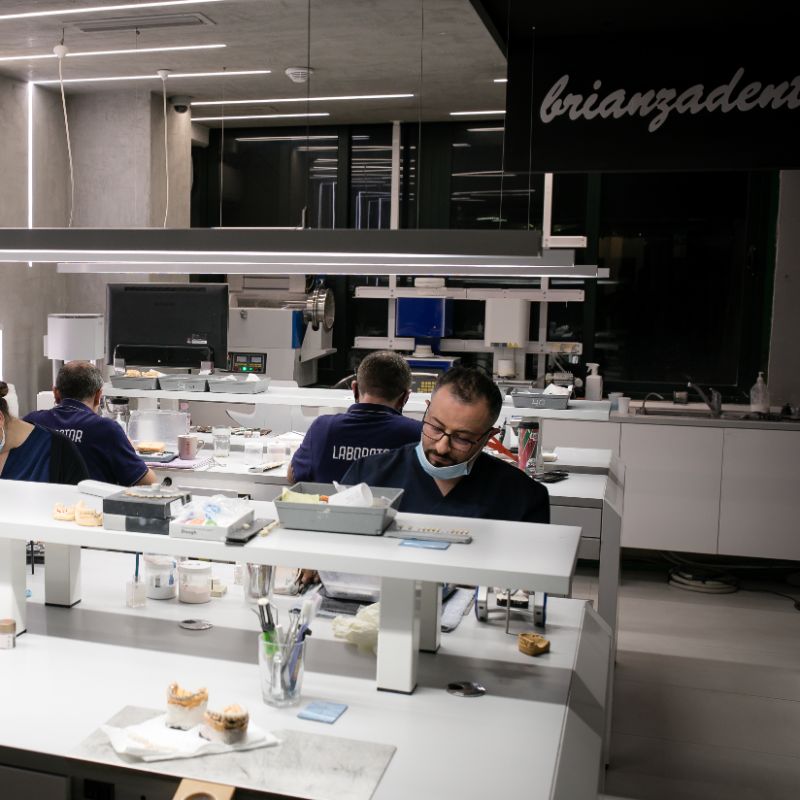Therapy / Prosthetics
Fixed Bridge.
Zircon Swiss metoxit CAD / CAM. It is the newest and most modern method of designing teeth for patients. This latest word in technology brings a perfection in the design of new teeth while increasing the quality of the works.
Laser melting German EOES. It is the newest and most modern method of 3D printing of teeth. This latest word of technology eliminates any human error in laboratories and increases the accuracy of the works.
Zircon skeletons made with CAD / CAM today surpass metal in its physical properties. Zircon bridges made of CAD / CAM structures are very efficient and aesthetic in the dental field. Some of its best properties are: it does not interact with other dental materials, it is anti-allergic and 100% biocompatible, it is a good insulator of cold and heat, it is a perfect simulator of natural tooth and does not change color over time.
What is Zirkon Prettau?
Zircon Prettau is a ceramic material produced in Europe in 2003. It is one of the most contemporary materials, the most aesthetic and the strongest against chewing forces. Zircon Prettau, the biggest advantage in addition to strength compared to other Zircons, has the property to be produced in different shades such as natural tooth. It is hygienic, does not smell and does not irritate the gums.
Types of prostheses are removable and fixed. The latter is done when the prosthesis is attached to natural teeth or implants, while the removable prosthesis rests on the patient’s gingiva which means he can move it.
The latest news (they have been for years, but which have been mostly exposed in the last 10 years), is that previously fixed prosthesis were applied only when natural teeth were present, while now, through implantology it can be done in patients who do not have their own teeth.
Other innovations are the composition of materials, which come and aesthetically bring a prosthesis more similar to natural teeth and gums (dissilicate, zirconia, allumina), or prostheses of a high precision (veneers), which allow cover the outside of the teeth with a thin ceramic coating.


Prosthesis on implants
Fixed Prosthesis.
The fixed prosthesis is fixed to the pillar teeth by cementation and cannot be removed by the patient himself. Fixed prostheses include:
1. Crowns (which can be metal-porcelain, zircon-porcelain, palladium-porcelain, gold-porcelain). Sheaths are prosthesis for single teeth, where the root is stored. Anchored to prepared teeth (stump) or by endocanal screws to root (Richmond crown)
2. Bridges (as casings can be made of metal-porcelain, zircon-porcelain, palladium-porcelain, gold-porcelain). In bridges, the tooth that has been removed is replaced by a prosthesis containing the removed tooth and the teeth next to it, which are reduced to the monk being prosthetized. The missing tooth together with the pillar teeth form the bridge.
3. Implant prosthesis: in this case the missing tooth root is replaced with a titanium implant or biocompatible alloy and a fixed prosthesis is screwed or cemented on top.
Prosthesis must have the following parameters:
Functional: the patient should have good chewing and regular joint functions (opening, closing, left-right laterality, protrusion-retraction, and correct phonetics).
Resistance: The prosthesis must resist the chewing forces and be resistant to oral fluids.
Non-allergic: should be prepared with materials that do not damage the oral cavity.
Aesthetic: artificial teeth should be as similar as possible to the patient’s natural teeth so as not to alter the profile.
Replacement of teeth
Removable Prostheses.
By “removable prosthesis” we mean all prostheses that can replace all or part of the jaw. They are called removable as they can be easily removed and washed by the patient. Removable prostheses are divided into:
1. Total prosthesis: The total prosthesis is placed when the patient has no teeth in the oral cavity. It consists of a support structure with acrylic resin and resin teeth, which is held to the patient’s jaw. This prosthesis respects the patient’s profile and chewing functions. It is called total mobile as it can be removed by the patient and washed at any time of the day. To place this type of prosthesis the patient must have a certain amount of bone so that it stays in place naturally.
2. Partial prosthesis: The partial prosthesis is anchored to the remaining teeth with wire braces. It is composed of an acrylic resin structure and resin teeth.
3. Skeletal prosthesis: is a partial prosthesis with a metal support structure.
4. Skeleton prosthesis with attachment: is a mixed prosthesis which consists of pillar elements such as the teeth that are placed in the casing, a skeletal prosthesis with metal brackets, which make this type of prosthesis to be stable but also for the patient to be able to remove it and set it him/herself at any time of the day.
5. Molded screw: is a type of metal screw which is prepared in the laboratory and placed at the root of the teeth. This screw gives the tooth more stability in case the tooth consists only of the root.


